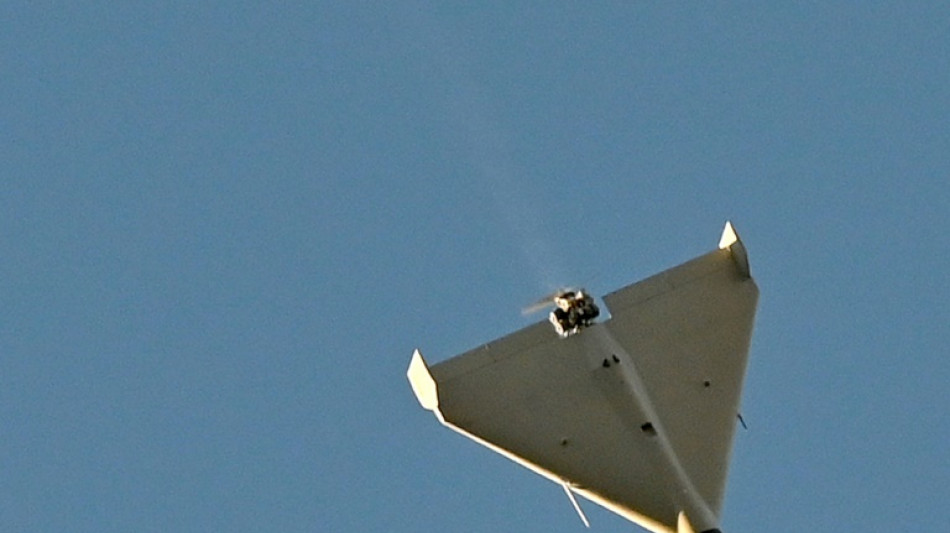
-
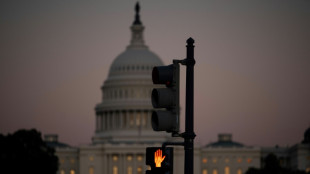 US government shutdown may last weeks, analysts warn
US government shutdown may last weeks, analysts warn
-
Arsenal host Lyon to start new Women's Champions League format

-
 Gloves off, Red run, vested interests: Singapore GP talking points
Gloves off, Red run, vested interests: Singapore GP talking points
-
Bills, Eagles lose unbeaten records in day of upsets

-
 Muller on target as Vancouver thrash San Jose to go joint top
Muller on target as Vancouver thrash San Jose to go joint top
-
Tokyo soars, yen sinks after Takaichi win on mixed day for Asia

-
 China's chip challenge: the race to match US tech
China's chip challenge: the race to match US tech
-
UN rights council to decide on creating Afghanistan probe
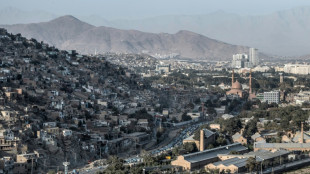
-
 Indonesia sense World Cup chance as Asian qualifying reaches climax
Indonesia sense World Cup chance as Asian qualifying reaches climax
-
ICC to give war crimes verdict on Sudan militia chief
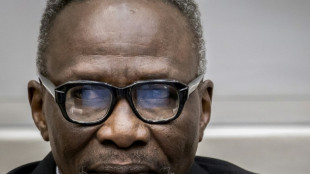
-
 Matthieu Blazy to step out as Coco's heir in Chanel debut
Matthieu Blazy to step out as Coco's heir in Chanel debut
-
Only man to appeal in Gisele Pelicot case says not a 'rapist'

-
 Appetite-regulating hormones in focus as first Nobel Prizes fall
Appetite-regulating hormones in focus as first Nobel Prizes fall
-
Gisele Pelicot: French rape survivor and global icon

-
 Negotiators due in Egypt for Gaza talks as Trump urges quick action
Negotiators due in Egypt for Gaza talks as Trump urges quick action
-
'My heart sank': Surging scams roil US job hunters
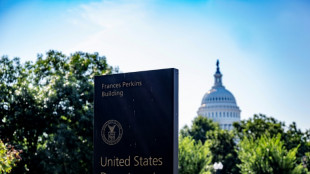
-
 Competition heats up to challenge Nvidia's AI chip dominance
Competition heats up to challenge Nvidia's AI chip dominance
-
UK police to get greater powers to restrict demos

-
 Guerrero grand slam fuels Blue Jays in 13-7 rout of Yankees
Guerrero grand slam fuels Blue Jays in 13-7 rout of Yankees
-
Five-try Bayonne stun champions Toulouse to go top in France

-
 Fisk reels in Higgo to win maiden PGA Tour title in Mississippi
Fisk reels in Higgo to win maiden PGA Tour title in Mississippi
-
Aces overpower Mercury for 2-0 lead in WNBA Finals

-
 Bayonne stun champions Toulouse to go top in France
Bayonne stun champions Toulouse to go top in France
-
Greta Thunberg among Gaza flotilla detainees to leave Israel

-
 Atletico draw at Celta Vigo after Lenglet red card
Atletico draw at Celta Vigo after Lenglet red card
-
Ethan Mbappe returns to haunt PSG as Lille force draw with Ligue 1 leaders

-
 Hojlund fires Napoli into Serie A lead as AC Milan held at Juve
Hojlund fires Napoli into Serie A lead as AC Milan held at Juve
-
Vampires, blood and dance: Bollywood horror goes mainstream

-
 Broncos rally snaps Eagles unbeaten record, Ravens slump deepens
Broncos rally snaps Eagles unbeaten record, Ravens slump deepens
-
Former NFL QB Sanchez charged after allegedly attacking truck driver

-
 France unveils new government amid political deadlock
France unveils new government amid political deadlock
-
Child's play for Haaland as Man City star strikes again

-
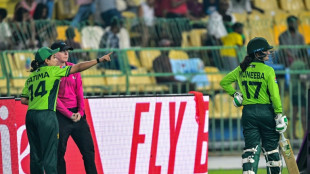 India crush Pakistan by 88 runs amid handshake snub, umpiring drama
India crush Pakistan by 88 runs amid handshake snub, umpiring drama
-
Hojlund fires Napoli past Genoa and into Serie A lead

-
 Sevilla rout 'horrendous' Barca in Liga thrashing
Sevilla rout 'horrendous' Barca in Liga thrashing
-
Haaland fires Man City to win at Brentford, Everton end Palace's unbeaten run

-
 Haaland extends hot streak as Man City sink Brentford
Haaland extends hot streak as Man City sink Brentford
-
Italy working hard to prevent extra US tariffs on pasta

-
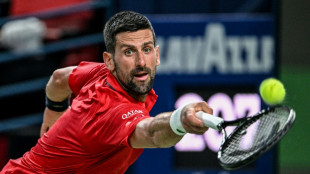 Sinner out of Shanghai Masters as Djokovic battles into last 16
Sinner out of Shanghai Masters as Djokovic battles into last 16
-
Swift rules N. America box office with 'Showgirl' event

-
 Ryder Cup hero MacIntyre wins Alfred Dunhill Links on home soil
Ryder Cup hero MacIntyre wins Alfred Dunhill Links on home soil
-
Republicans warn of pain ahead as US shutdown faces second week
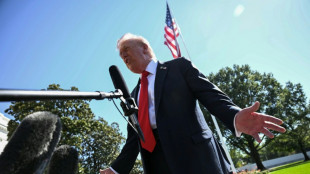
-
 Sevilla rout champions Barca in shock Liga thrashing
Sevilla rout champions Barca in shock Liga thrashing
-
Norris-Piastri clash overshadows McLaren constructors' title win

-
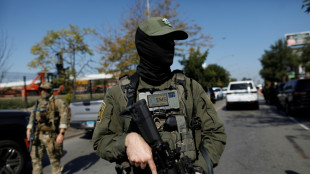 Trump administration declares US cities war zones
Trump administration declares US cities war zones
-
Bad Bunny takes aim at Super Bowl backlash in 'SNL' host gig

-
 El Khannouss fires Stuttgart into Bundesliga top four
El Khannouss fires Stuttgart into Bundesliga top four
-
Insatiable Pogacar romps to European title

-
 Newcastle inflict more pain on Postecoglou, Everton end Palace's unbeaten run
Newcastle inflict more pain on Postecoglou, Everton end Palace's unbeaten run
-
Daryz wins Prix de l'Arc de Triomphe thriller


Russia's use of Iranian drones shows up domestic weakness
The use by Russia of Iranian drones in its war against Ukraine makes clear the weaknesses of its domestic industry and Tehran's growing claim on the market for unmanned aircraft, experts say.
Washington believes Iran has delivered hundreds of drones, which Ukrainian officials say are now being used in strikes like those launched against cities and energy infrastructure on Monday.
- What drones has Iran delivered? -
So far two models of Iranian drone have been identified in Ukraine's skies, built for two different purposes.
One of them, the Shahed 136, is a relatively low-cost "kamikaze drone" that can be programmed to fly automatically to a set of GPS coordinates with a payload of explosives.
"It flies quite low, striking a target that must be stationary at a range of a few hundred kilometres," said Pierre Grasser, a researcher tied to Paris' Sorbonne University.
One was photographed by an AFP journalist plunging into Kyiv early Monday.
The second type, the Mohajer-6, is "similar in size and functionality to the Bayraktar TB-2 drone from Turkey," said Vikram Mittal, a professor at the US military academy in West Point.
The Turkish model's missile strikes on Russian armour made the Bayraktar a symbol of successful Ukrainian resistance to invasion early in the war, with a propaganda song composed about them widely shared online.
Both drones belong to a type broadly referred to as MALE (Medium Altitude, Long Endurance) unmanned aircraft, like the US-made Predator used in Iraq, Afghanistan and elsewhere.
The TB-2 was also used by Azerbaijan in its 2020 war with neighbouring Armenia to retake part of the Azerbaijani region of Nagorno-Karabakh from Armenian control.
- Are Iranian drones effective? -
"Just like any armed drone or loitering munition, they're very effective when the enemy has no way of protecting themselves or fighting back," said Jean-Christope Noel, a researcher at the French Institute for International Relations.
Mittal said much of their initial success comes "from being a new weapon on the battlefield."
"The Ukrainians will eventually shoot down or capture one of the drones, dissect it, and develop counter-drone systems," he added, although that "could take months".
For now, Kyiv's forces could use shoulder-launched anti-aircraft missiles to attack the drones in daylight, or radar-equipped versions at night.
They could also attempt to use complex GPS jamming techniques to turn the Shahed 136 off course, as they have no backup system to reach their target without satellite guidance.
Such kamikaze drones are "a money-saving move for Russia, because it saves valuable cruise missiles worth $1.5 million to $2.0 million" per shot, Grasser said.
But "their main shortcoming is they can only hit stationary targets," he added.
"They don't pose any threat to troops in the field. The arrival of these drones therefore shouldn't change the course of the fighting."
- Is Russia's industry failing? -
Russia is one of the world's largest arms producers, but has still found itself forced to turn to Iran in this case.
"The defence ministry has worked out tactical and technical requirements for drones. And unfortunately most (Russian) manufacturers can't meet them," Russian colonel Igor Ischchuk recently told the country's TASS news agency.
Although no Russian manufacturer offers long-range kamikaze drones like the Shahed 136, "they are supposed to have equipment along the lines" of the TB-2 or Mohajer MALE drones, Grasser said.
"The fact they're taking Iranian drones is an admission of industrial failure... it shows (Russian industry) can't keep up the pace," he added.
Western sanctions over the invasion of Ukraine have hit a Russian industry already sapped by supply chain disruption during the Covid-19 pandemic.
Russia "no longer has access to Western technological components, and their attempts to mass-produce these types of devices have been fruitless," Noel said.
- Iranian-Turkish rivalry? -
As drones become more fundamental to fighting wars, "there is likely somewhat of a mid-tier, cheap drone arms-race between the Iranians and Turks to try to gain control of the market and expand their country's sphere of influence," Mittal said.
While the US and Israel host the world's top-of-the-line manufacturers, "the Turkish drones are a step down, but they are more reliable than the Iranian drones, which don't seem very precise," French drone expert Marianne Renaux said.
Tehran can already count on some buyers for its product in the Middle East in Yemen, Lebanon or Iraq, Noel said.
"But American sanctions against any customers make for a hard limit on the number of candidates who might like to arm themselves with this gear," he added.
O.Lorenz--BTB


